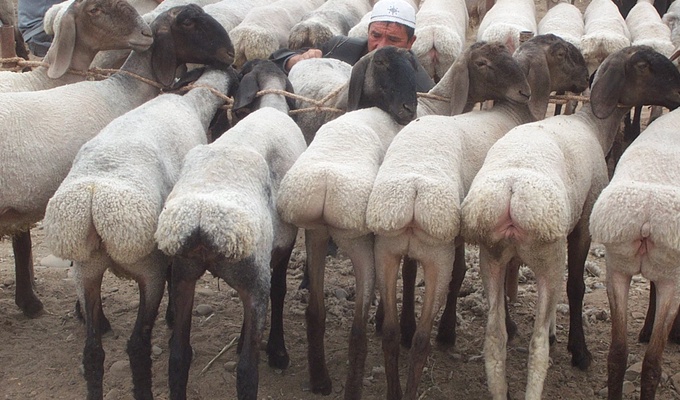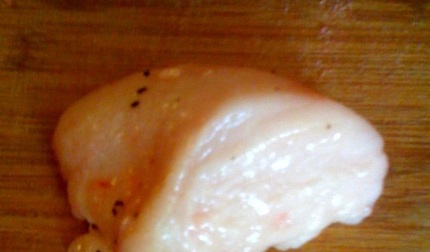The fat-tailed sheep is a general type of domestic sheep known for their distinctive large tails and hindquarters. Fat-tailed sheep breeds comprise approximately 25% of the world's sheep population, and are commonly found in northern parts of Africa, the Middle East, Pakistan, Afghanistan, Iran, India, Bangladesh, Western China, Somalia and Central Asia.
Two general varieties of fat-tails exist, the broad fat-tails and the long fat-tails. The majority of fat-tailed sheep breeds have broad fat-tails, where the fat is accumulated in baggy deposits in the hind parts of a sheep on both sides of its tail and on the first 3–5 vertebrae of the tail. In the long-tailed sheep the fat is accumulated in the tail itself, which may grow so large that it drags on the ground and hinders copulation.
The earliest record of fat-tailed sheep is found in ancient Uruk (3000 BC) and Ur (2400 BC) on stone vessels and mosaics. Another early reference is found in the Bible (Exodus 29:22 and Leviticus 3:9), where a sacrificial offering is described which includes the tail fat (called Alya, Hebrew: אַלְיָה) of sheep.
Sheep were specifically bred for the unique quality of the fat stored in the tail area and the fat (called alyah, Arabic: ألية) was used extensively in medieval Arab and Persian cookery. The tail fat is still used in modern cookery, though there has been a reported decline, with other types of fat and oils having increased in popularity.

